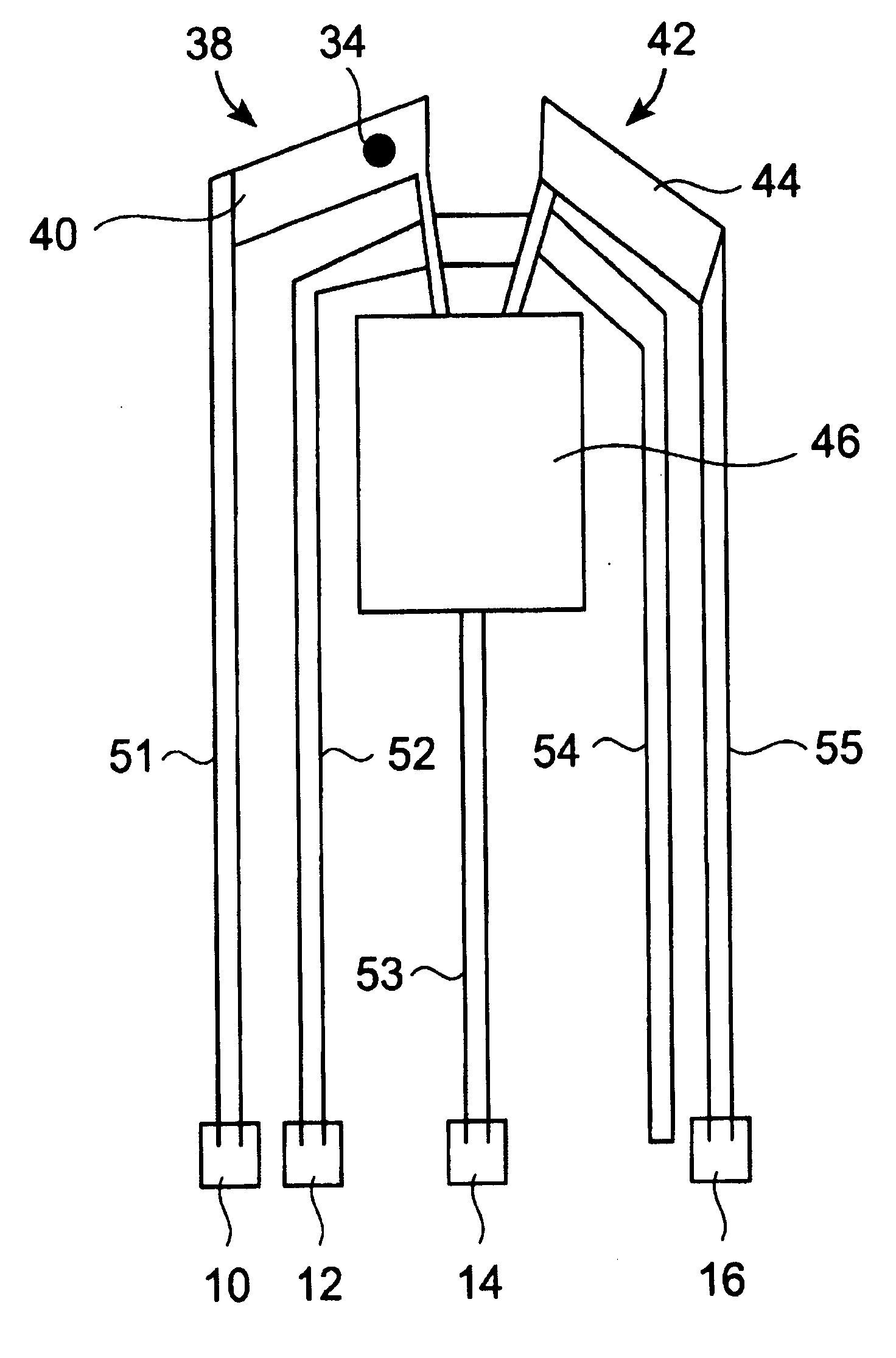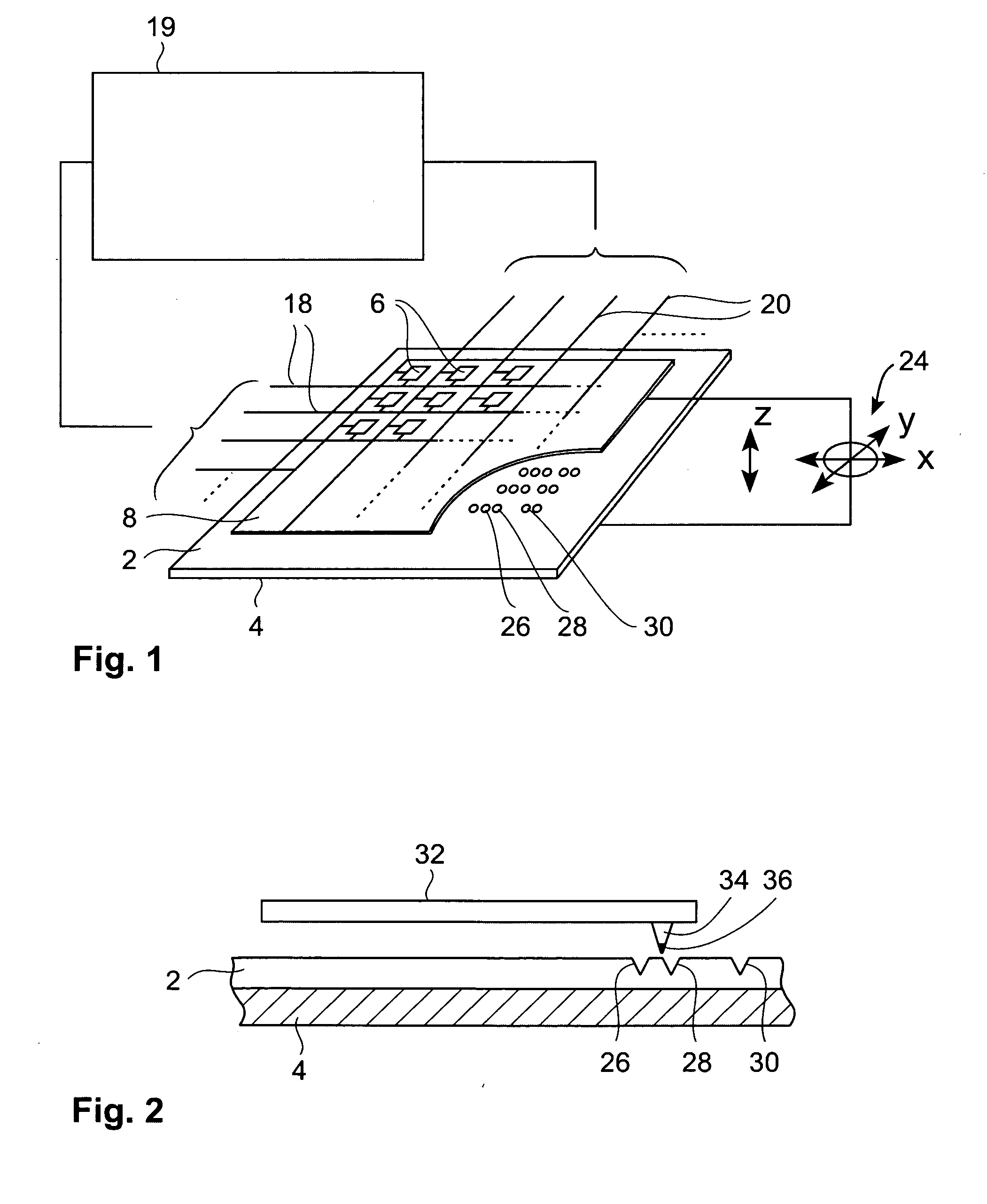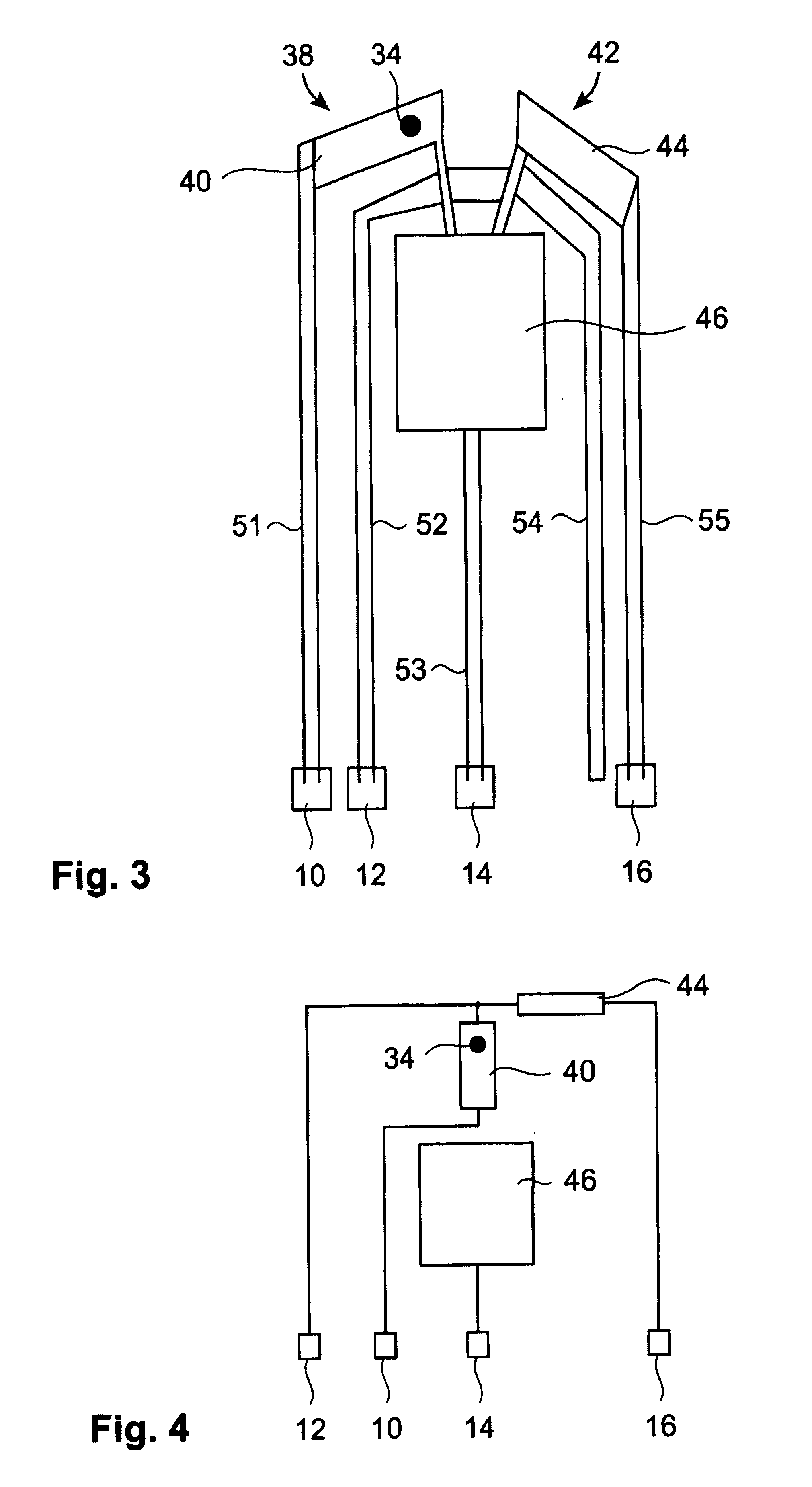Data storage device
- Summary
- Abstract
- Description
- Claims
- Application Information
AI Technical Summary
Benefits of technology
Problems solved by technology
Method used
Image
Examples
Embodiment Construction
[0051] The present invention provides a storage device comprising a storage medium for storing data in the form of marks, e.g. topographic or magnetic marks but not necessarily limited to these. At least one probe is mounted on a common frame; the common frame and the storage medium are designed for moving relative to each other for creating or detecting the marks. The marks represent data, preferably logical “1”s whereas the absence of marks preferably represents logical “0”s.
[0052] Each probe comprises a tip with a nanoscale apex facing the storage medium, a read sensing element and a write element. Each probe further comprises a capacitive platform, which forms a first electrode and is designed so that a voltage potential can be applied to the capacitive platform, which is independent from a control signal for the read sensing element and which is independent from a control signal for the write element. The capacitive platform may physically be formed from more than one part. A ...
PUM
 Login to View More
Login to View More Abstract
Description
Claims
Application Information
 Login to View More
Login to View More - R&D
- Intellectual Property
- Life Sciences
- Materials
- Tech Scout
- Unparalleled Data Quality
- Higher Quality Content
- 60% Fewer Hallucinations
Browse by: Latest US Patents, China's latest patents, Technical Efficacy Thesaurus, Application Domain, Technology Topic, Popular Technical Reports.
© 2025 PatSnap. All rights reserved.Legal|Privacy policy|Modern Slavery Act Transparency Statement|Sitemap|About US| Contact US: help@patsnap.com



